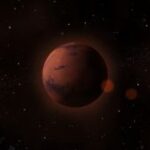Stardust@home, this is really cool, you can sign up to help researchers look for particles from distant stars that were captured by the spacecraft Stardust. The “dust” particles are embedded in some collector plates made of Aerogel. Researchers are looking for interstellar dust grains in the collector plates. Space travel beyond Mars has discovered that there is a steady stream of these particles constantly moving through our solar system, as we travel through the Milky Way. The Aerogel plates capture the free-floating Space particles (most likely from a star) as the spacecraft Stardust (launched on February 7, 1999) travels through space. However, Stardust it not the only spacecraft with collector plates of some kind.
The Collector plates were brought to earth by a sample return capsule on January 15, 2006, now researchers need your help. They are recruiting more then 100,000 volunteers to look through the “Aerogel movie’s” they have made from the collector plates. The interstellar dusts are extremely small and hard to find with the largest of them only being a few microns in diameter.
Scientists working on this project are using an automatic optical microscope to create digital “movies” of every little section of the Aerogel collector plates that have returned from space. AnAerogel “movie”is a series of40 images taken of the same minute location of the Aerogel collector, with each image focused on a different depth within the Aerogel. It will take 1.6 million movies to cover the entire surface of a collector plate. Once the movies are done, they are stored at the Space Science Laboratory at the University of California, Berkeley, in their database and emailed out to Stardust@home volunteers around the world.
Volunteers will use a “virtual microscope” to scan each movie. The virtual microscope is a web-based piece of software, you will not need to download it anything on your computer. And your computers OS does not matter (Mac, Linux, or windows) it works with all since it is web-based. You will not be the only one looking at the movies, each will be sent to at least four different volunteers, to independently scan, and send back to Berkeley. If three or more suspect a “track” in a movie, it will be further scrutinized by trained scientists. You do not actually look for the “dust”; you look for signs of impact. The particles are hard to find because they only penetrate a short way past the surface of the collector plates. In addition, the Aerogel itself it cracked and creased from seven years in space. The stuff they want it are few, tiny, and hidden in the flaws of the Aerogel.
You will learn how to spot the signs after you go through the training session on their website when you sign up. It is a short training session, about 20 minutes. Then you can start downloading movies to scan.
It is ok if you do not pass the first time you take the test. You can always take it again. Once you are a volunteer, you will be able to track your progress and confirmed discoveries on a special web page that only you can log into, see if scientists determine if any of your “tracks” are real particles.
Volunteers are necessary since interstellar dust has never been captured in Aerogel, so no Pattern recognition computer program exists to identify the signs of impact. And, the human eye can do it with only a small amount of training.
To take part in this, go to the Stardust@home website at http://stardustathome.ssl.berkeley.edu/ and click on the “Test and Register” link, under “Getting Started” on the left-hand side.


